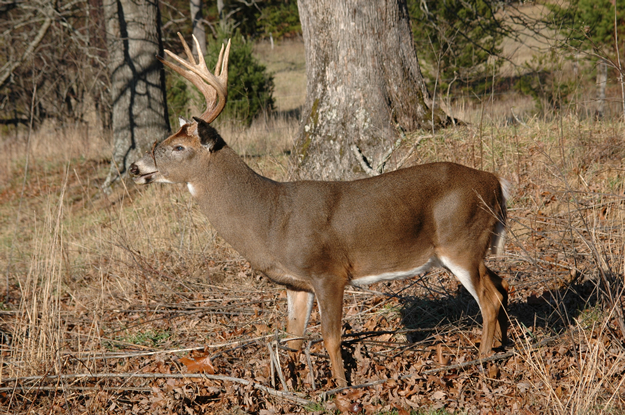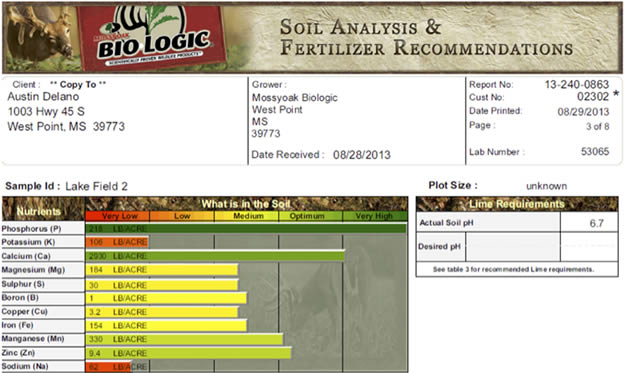
 Editor’s Note: Alex Rutledge of Birchtree, Missouri, has been a Mossy Oak Pro Staffer for the last 6 years but has been in the hunting industry as a professional hunter and TV personality for more than 20years. Today he co-hosts the “Bloodline Outdoors” TV show on the Sportsman’s Channel and the “Bloodline Outdoors” radio show. When we asked Rutledge about his favorite Mossy Oak pattern, we found a true believer. “Mossy Oak’s original Bottomland is hard to beat, but I also hunt in Break-Up, and this year I’ll be hunting in Mossy Oak Break-Up Country.”
Editor’s Note: Alex Rutledge of Birchtree, Missouri, has been a Mossy Oak Pro Staffer for the last 6 years but has been in the hunting industry as a professional hunter and TV personality for more than 20years. Today he co-hosts the “Bloodline Outdoors” TV show on the Sportsman’s Channel and the “Bloodline Outdoors” radio show. When we asked Rutledge about his favorite Mossy Oak pattern, we found a true believer. “Mossy Oak’s original Bottomland is hard to beat, but I also hunt in Break-Up, and this year I’ll be hunting in Mossy Oak Break-Up Country.”
At the beginning of summer in May on the 200 acres that I own and hunt, I’ll plant 5 acres of soybeans - not to make a crop but to feed my deer. I know that before the beans mature, the deer probably will consume all those young soybean plants, usually by the middle or the end of July. So, I’ll return to that same field and use no-till equipment to drill and plant another crop of soybeans. We’ve really been fortunate in the Midwest this year to have had an abundance of rain, so for this reason I can plant a second crop of soybeans. Remember that I’m not planning on the soybeans maturing, I just want the beans to come out of the ground and possibly get to the two-leaf stage where the deer will feed on them throughout the late summer and early fall. I’ve found during the summer months and the growing season that soybeans are like ice cream to the deer.
 There’s plenty of other food that the deer can eat during the spring and summer months, but deer will come from great distances to eat soybeans. On my property, I want to pull in older- age- class bucks from surrounding properties. I want to have enough food, water and does to hold those deer on my property all year long. I also use a feeder to hold deer on my land. In Missouri, we can feed deer up until 10 days before the opening of deer season. Too, I’ll improve the stand sites on my hunting area. Once I know the region where a buck lives, eats, drinks and beds, I’ll be looking for stand sites where I possibly can take that deer during hunting season. I’ll go in and cut down non-commercial trees to let in more sunlight to the ground to grow more native browse. Then I’ll use the trees I’ve cut to build more bedding sites and thick-cover areas for the deer to move through during daylight hours.
There’s plenty of other food that the deer can eat during the spring and summer months, but deer will come from great distances to eat soybeans. On my property, I want to pull in older- age- class bucks from surrounding properties. I want to have enough food, water and does to hold those deer on my property all year long. I also use a feeder to hold deer on my land. In Missouri, we can feed deer up until 10 days before the opening of deer season. Too, I’ll improve the stand sites on my hunting area. Once I know the region where a buck lives, eats, drinks and beds, I’ll be looking for stand sites where I possibly can take that deer during hunting season. I’ll go in and cut down non-commercial trees to let in more sunlight to the ground to grow more native browse. Then I’ll use the trees I’ve cut to build more bedding sites and thick-cover areas for the deer to move through during daylight hours.
Another reason I can be so confident about my taking a deer on opening day is because I spend a lot of time looking at these bucks with binoculars. I try and stay about 500-yards away from the deer and make sure I have a favorable wind when I’m glassing these bucks. But I don’t just depend on my visual sightings and my trail-camera pictures to help me decide which buck I’ll hunt on opening day. I’ve got to have the right wind to make sure my human odor won’t be blown into the deer’s nose. Most of my stand sites face either a northeast wind or a southwest wind. Even if I’ve pinpointed the day, the time and the place that a mature buck should show up, if I don’t have a favorable wind on that day, I won’t hunt that buck. Remember the number-one ingredient to having trophy bucks to hunt is to not spook them and not give them a reason to leave your land.
Yesterday: Why Hunt Deer on Cattle Farms
Tomorrow: Productive Deer Stand Site Placement






























